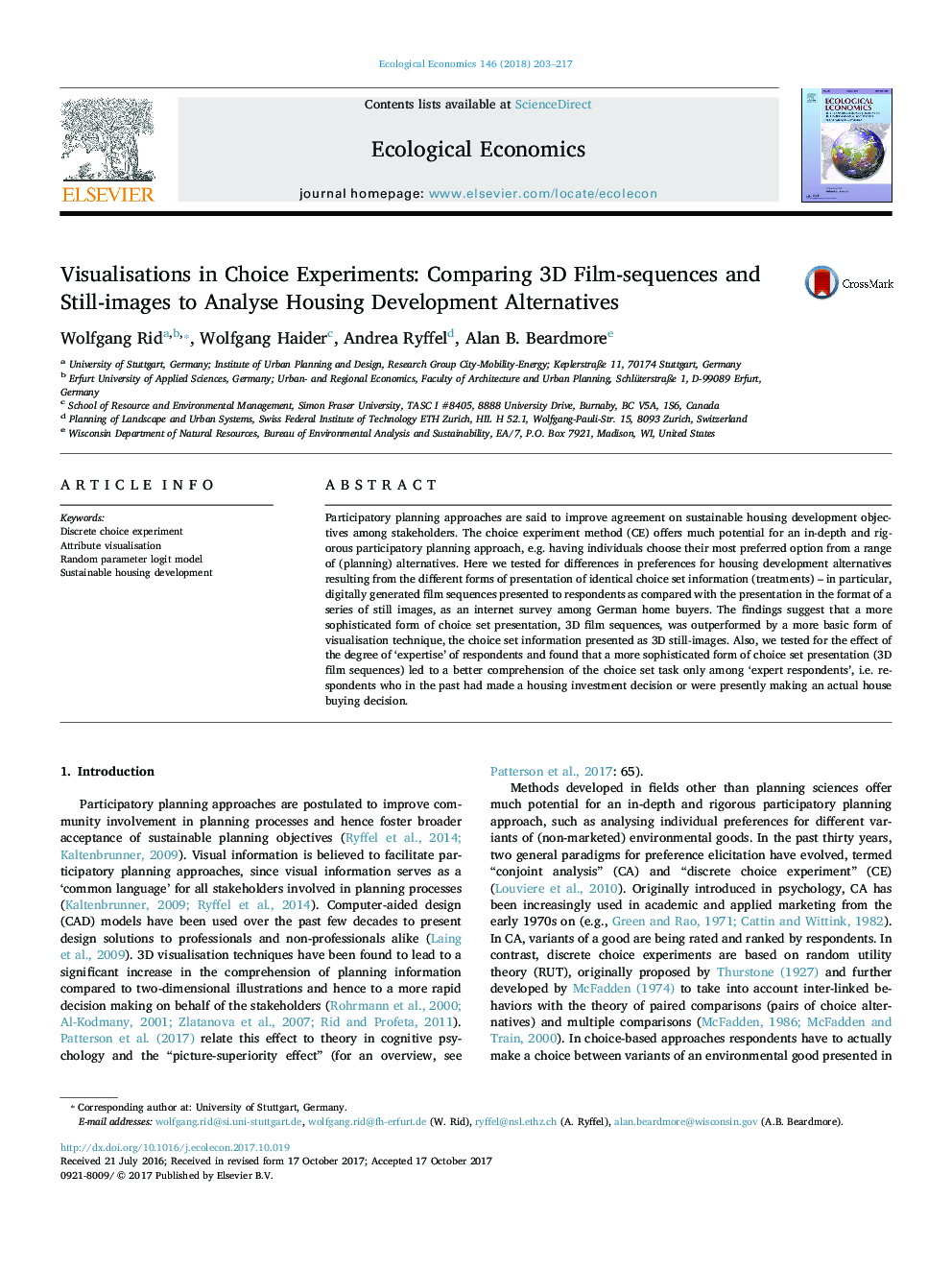| Article ID | Journal | Published Year | Pages | File Type |
|---|---|---|---|---|
| 7344325 | Ecological Economics | 2018 | 15 Pages |
Abstract
Participatory planning approaches are said to improve agreement on sustainable housing development objectives among stakeholders. The choice experiment method (CE) offers much potential for an in-depth and rigorous participatory planning approach, e.g. having individuals choose their most preferred option from a range of (planning) alternatives. Here we tested for differences in preferences for housing development alternatives resulting from the different forms of presentation of identical choice set information (treatments) - in particular, digitally generated film sequences presented to respondents as compared with the presentation in the format of a series of still images, as an internet survey among German home buyers. The findings suggest that a more sophisticated form of choice set presentation, 3D film sequences, was outperformed by a more basic form of visualisation technique, the choice set information presented as 3D still-images. Also, we tested for the effect of the degree of 'expertise' of respondents and found that a more sophisticated form of choice set presentation (3D film sequences) led to a better comprehension of the choice set task only among 'expert respondents', i.e. respondents who in the past had made a housing investment decision or were presently making an actual house buying decision.
Related Topics
Life Sciences
Agricultural and Biological Sciences
Ecology, Evolution, Behavior and Systematics
Authors
Wolfgang Rid, Wolfgang Haider, Andrea Ryffel, Ben Beardmore,
